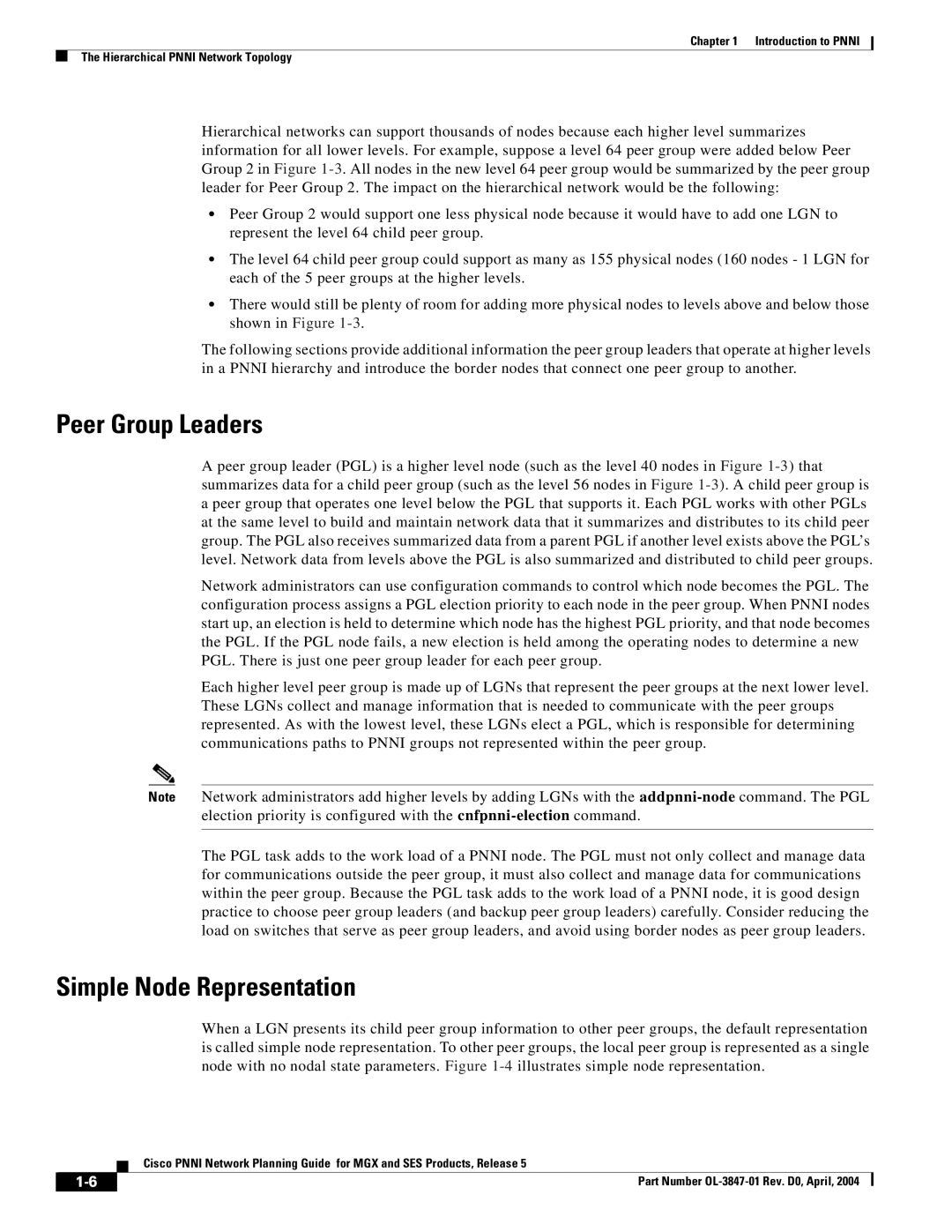
Chapter 1 Introduction to PNNI
The Hierarchical PNNI Network Topology
Hierarchical networks can support thousands of nodes because each higher level summarizes information for all lower levels. For example, suppose a level 64 peer group were added below Peer Group 2 in Figure
•Peer Group 2 would support one less physical node because it would have to add one LGN to represent the level 64 child peer group.
•The level 64 child peer group could support as many as 155 physical nodes (160 nodes - 1 LGN for each of the 5 peer groups at the higher levels.
•There would still be plenty of room for adding more physical nodes to levels above and below those shown in Figure
The following sections provide additional information the peer group leaders that operate at higher levels in a PNNI hierarchy and introduce the border nodes that connect one peer group to another.
Peer Group Leaders
A peer group leader (PGL) is a higher level node (such as the level 40 nodes in Figure
Network administrators can use configuration commands to control which node becomes the PGL. The configuration process assigns a PGL election priority to each node in the peer group. When PNNI nodes start up, an election is held to determine which node has the highest PGL priority, and that node becomes the PGL. If the PGL node fails, a new election is held among the operating nodes to determine a new PGL. There is just one peer group leader for each peer group.
Each higher level peer group is made up of LGNs that represent the peer groups at the next lower level. These LGNs collect and manage information that is needed to communicate with the peer groups represented. As with the lowest level, these LGNs elect a PGL, which is responsible for determining communications paths to PNNI groups not represented within the peer group.
Note Network administrators add higher levels by adding LGNs with the
The PGL task adds to the work load of a PNNI node. The PGL must not only collect and manage data for communications outside the peer group, it must also collect and manage data for communications within the peer group. Because the PGL task adds to the work load of a PNNI node, it is good design practice to choose peer group leaders (and backup peer group leaders) carefully. Consider reducing the load on switches that serve as peer group leaders, and avoid using border nodes as peer group leaders.
Simple Node Representation
When a LGN presents its child peer group information to other peer groups, the default representation is called simple node representation. To other peer groups, the local peer group is represented as a single node with no nodal state parameters. Figure
| Cisco PNNI Network Planning Guide for MGX and SES Products, Release 5 |
Part Number |
